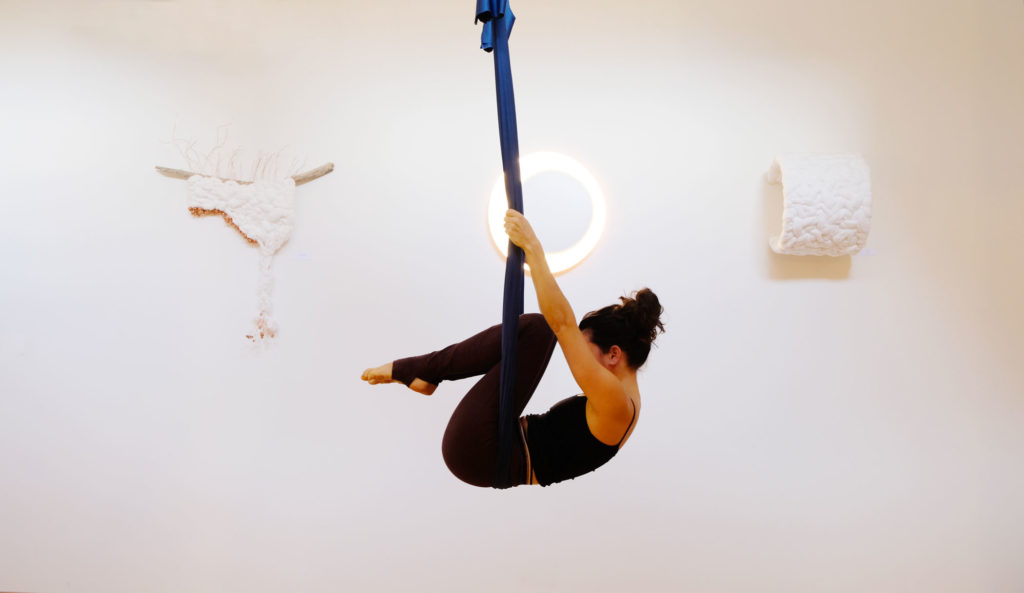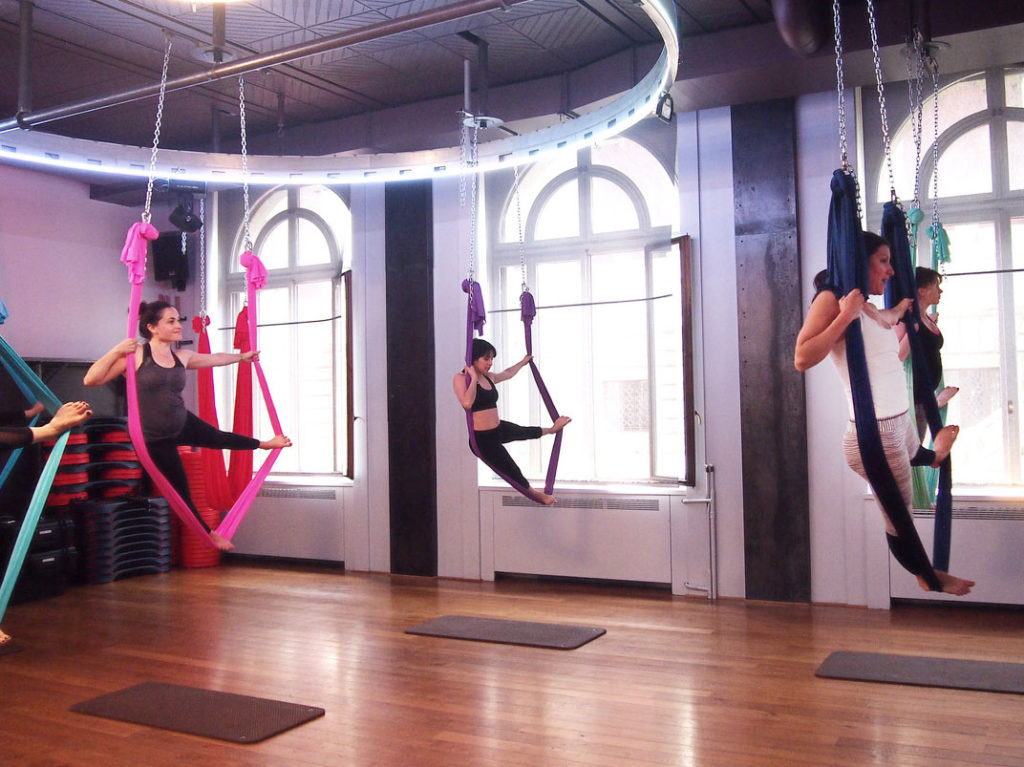




Blog
What is Embodied Yoga?
“Welcome Home, welcome to your Body!”
In a world dominated by the constantly stimulated mind and which gradually disconnects us from our body, Embodied Yoga is a practice that balances us by reconnecting us to our own sensations and giving them permission to exist in through the body. A knowledge which does not pass through the intellect but which rests it, a sensory guidance which activates our senses to find a deeper connection, this is the yoga of the incarnation, “Embodied Yoga” in English.
A practice which, without judging, installs us in the present moment and “gives us permission” to explore without the primary goal being to seek to go further or want to do better, it is a conversation with oneself.
Over time and in line with its time, yoga has evolved and continues to develop continuously. Today yoga has a tendency to become more and more athletic, oriented towards achieving something, but this has never been the primary goal of yoga. Even at the initial stage of Hatha yoga (when the use of the body was included in yogic practice), the emphasis was not focused on the asana (posture), one used the movement of energy in the body through Kriya, including breathing and pranayama techniques, meditation, visualization, and sensory or somatic approaches.
Embodied yoga is a somatic experience, a connection to what one feels from within, the emphasis is on the experience with one’s body and not on the form to be accomplished “may the asana be at your service. and not that you are at the service of the asana ”. A practice that reconnects us to our own sensations, teaches us to feel and lets form appear.

Each person has a different story, shape, size, bone structure. Instead of imposing a single alignment, Embodied Yoga encourages the student to position / align through their own investigation. This method does not seek to completely get rid of alignment but cultivates “sensory alignment”, an awareness of the individual and personal structure so that the person finds their own bodily support. This approach invites us to move away from the idea of a “right or wrong” placement defined by others, to focus more on what we are experiencing with ourselves and free ourselves from judgment.
We learned anatomy from dead bodies and the traditional alignment is based on this teaching. Sensory alignment is based on organic and living movements, inspired by movements of everyday life.
The search for a shape (posture) to satisfy can stress our physical structure, make it rigid and restrict our breathing which is the main communicator with the nervous system. Spacious and unrestricted breathing increases the activity of the parasympathetic nervous system (rest) and at the same time decreases that of the sympathetic nervous system (fight or flight) which results in a slowing of the heart rate, a decrease in blood pressure and maintenance of a calm mind and a relaxed body.
Another physiological element to consider in an Embodied Yoga practice is the fasciae. Our body is completely covered and connected by this connective tissue which is also in direct relation with our nervous system. By the fluidity and the non-linear movements encouraged by the practice of Embodied Yoga, the fasciae are stimulated and will allow to maintain a good sensory connection between the body and the mind.
Contrary to what one might think this freedom can be demanding and emotionally destabilizing, the work will be to welcome all that is behind this freedom that connects us with our own Self, including our fears of seeing ourselves as we are, believe in yourself and what you feel … For some people Embodied yoga will be an incredible opportunity to get to know yourself and to recharge your batteries, for others this freer approach that takes us out of our comfort zone may stimulate an already existing lack of security, reverting to a more traditional practice may be more appropriate.
“I am responsible for how I feel”
Aerial Yoga
Aerial yoga is a stimulating and peaceful practice that has found its place in the modern world with the help of a hammock. It’s still a fairly new method, but ho! how exciting!
What is not new are its roots. Over the centuries yogis have experimented, taken different paths to meet themselves. Suspension is one way.
Aerial yoga is the result of an evolution, an adaptation inherited from the curiosity of our Yogi master ancestors open to exploration. B.K.S. Iyengar is one of the masters who introduced the use of accessories such as the chair, blocks, strap, rope in order to provide new support for the accompaniment of the body and to enrich the teaching.
The emblematic position of the Indian discipline, the inversion “posture on the head” is partly responsible for the birth of aerial yoga. Iyengar had long used a rope for inversions, initially with simple uses, to stretch the spine.
Here are some sources from which Aerial Yoga has its roots:
Kurunta Yoga, this yoga from Iyengar uses straps firmly attached to the wall at different heights, in order to achieve different types of postures while being held by the ropes either at the hips, hands or shoulders.
The Kundalini Raju by Nithyananda uses a rope hanging from the ceiling on which the student climbs, coils, hangs, settles. This practice is not only a way to experience the power in the body, but also the awakening of the Kundalini.
The Aerial Arts: The discipline of aerial fabric consists of performing aerial acrobatics using two long and wide strips of flexible fabric hanging from the ceiling. The fabric is a very physical aerial apparatus in which the circus performers string together figures several meters above the ground. It is one of the most recent circus techniques.
The creative and playful spirit of the aerial arts, aerial yoga is inspired by evolving postures and movements, creative and why not poetic. The touch of the fabric, its softness and fluidity help to disconnect to connect with other worlds. The fabric used is the same material as the aerial fabric except that it hangs on 2 points (most of the time) to transform into a hammock.
“Take flight to take hold!”
Research underscores the importance of practicing balance techniques from an early age and maintaining them throughout life. This research also suggests participating in activities that take us out of our usual orientation in space and that make us move in space in a different way (swinging, being upside down, backing up, etc.). All of this information indicates that the practice of aerial yoga is incredibly good at slowing down the gradual loss of balance that accompanies aging and is also very good at maintaining mental health through unusual and disorienting activity that are trainers of the brain.
Between heaven and earth
Being in the air, swinging is stimulating, fun, beneficial, but it is also important in an aerial yoga practice to anchor oneself to the earth physically and energetically. The major part of the sequences remain in contact with the ground in negotiation between the sky and the earth. Due to the instability of the hammock, this activity is very complete because it solicits and awakens muscles that are usually little used “universal core”.
This practice also improves venous return, drains toxins and releases emotional blockages and has anti-stress properties.
By using our own weight in the hammock, you can relax smoothly without straining your joints. Very good technique for regaining space between the vertebrae, relieving the lower back and letting go.
With its weight supported by the fabric, performing certain postures with the hammock becomes more accessible and progressive than if they were performed on the ground. For experienced yogis, it is also a new way of approaching their discipline.
Not all aerial yoga classes introduce the spiritual aspect or traditional yoga techniques but in my opinion it is important to have an understanding of what yoga is to call your aerial “yoga” class.
“Air movement can only be done with a deep anchorage.”

